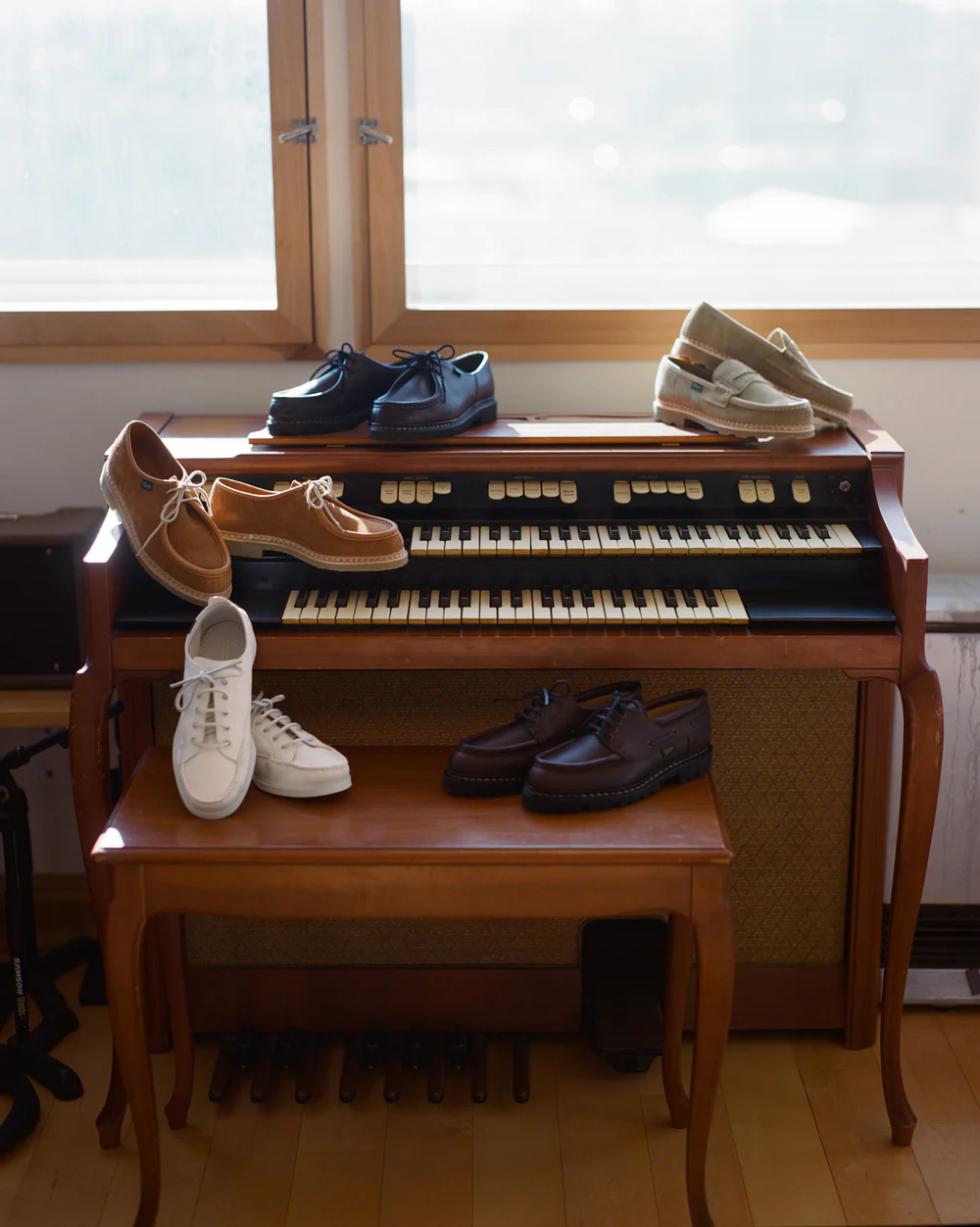The Power of Paraboot
By Charlie Teasdale
2024년 3월 28일

Much has been written about the emergence of the ‘post-sneaker world’ - a sense that the tyranny trainers have wrought on men’s style is at last under threat from the resurgent power of loafers, oxfords and other classically formal designs - but no shoe embodies the fight like Paraboot’s Michael lace-up. Over the past few years, the low-profile, two-eyelet shoe has not only become the official shoe of menswear dudes, but an if-you-know-you-know emblem of good taste.

That said, it has taken a while. The first embers of Paraboot smoldered in 1908 in the Chartreuse mountains of eastern France. Rémy-Alexis Richard, a shoemaker with aspirations beyond the hardy alpine footwear market, was making dainty, leather-soled shoes for the Parisian élite. But after witnessing the potential of rubber - at that time, a new technical material - on a 1926 trip to the US, he brought it back to France with the idea of fitting classic leather uppers with cleated rubber soles. The next year, Paraboot, named for Para, the Amazonian rubber port, was born.
The business grew steadily until the Second World War, where it floundered, but was somewhat saved by the release of the Michael in 1945. Post-war, consumers preferred cheaper, more mass produced goods. But new boss Julien, son of Remy Richard, decided to double-down on high-grade materials and design a few pairs of "light-duty" shoes targeted specifically at white-collar guys that spent a lot of time on their feet. Architects, surveyors, veterinary surgeons, and the like.

The result was a low cut, snub-nose derby with a flat, apron-toe, and chunky rubber sole stitched to the upper via a Norwegian welt (which is similar to a Goodyear welt, invented with mountains in mind). Kind of like a boat shoe you could wear on a farm; somehow both elegant and hefty. It was, as the French might say, ‘jolie-laide’.
Looking back, it feels like the entire Paraboot vibe can be traced back to the Michael. Today, the same chunky rubber sole pervades throughout the collection, and near enough every shoe offers some kind of compromise between grace and grit. You can see it in the brilliant Reims loafer (a laceless Michael, essentially), the Chambord lace-up (which the brand dubs an ‘all-season golf shoe’), and the Chimey, a kind of moccasin/derby hybrid that looks as good with cuffed tailoring as it does with battered denim.

But Paraboot has been shrewd in its modernisation, too. The mainline collection is consistently chic and unfussy, allowing lifelong customers to find the same cap-toe Oxford they’ve loved since ‘79. But via collaboration and limited editions, the brand has been able to connect to a younger, more zeitgeisty audience. Highlights include a low-top suede hiker made with Japanese brand Engineered Garments, a chukka boot for French brand Arpenteur, and a Michael in pebble-grain leather and whisky suede for Drake’s. Even Zegna got Paraboot to show them what a great shoe really looks like.

In turn, Tyler, the Creator - a menswear demigod of our age, is a big fan of the Reims loafer. And if you scroll through the brand’s tagged Instagram photos, it seems like all of the world’s coolest young dudes, wherever they may be, are wearing Paras.

And yet, Paraboot seems nonplussed. No celebrity ambassadors, no garish social media campaigns, just a no-nonsense gallic charm. The collection is split into four pleasingly brusque pillars: business, casual, sportswear and outdoor, and store interiors have a lowkey, almost municipal aura. On Paris’s glitzy Rue St. Honoré, you might miss the humble Paraboot boutique for the shimmer of the Byredo flagship opposite. But that’s the point. Paraboot shoes do not demand your attention, and yet, you still look twice.










